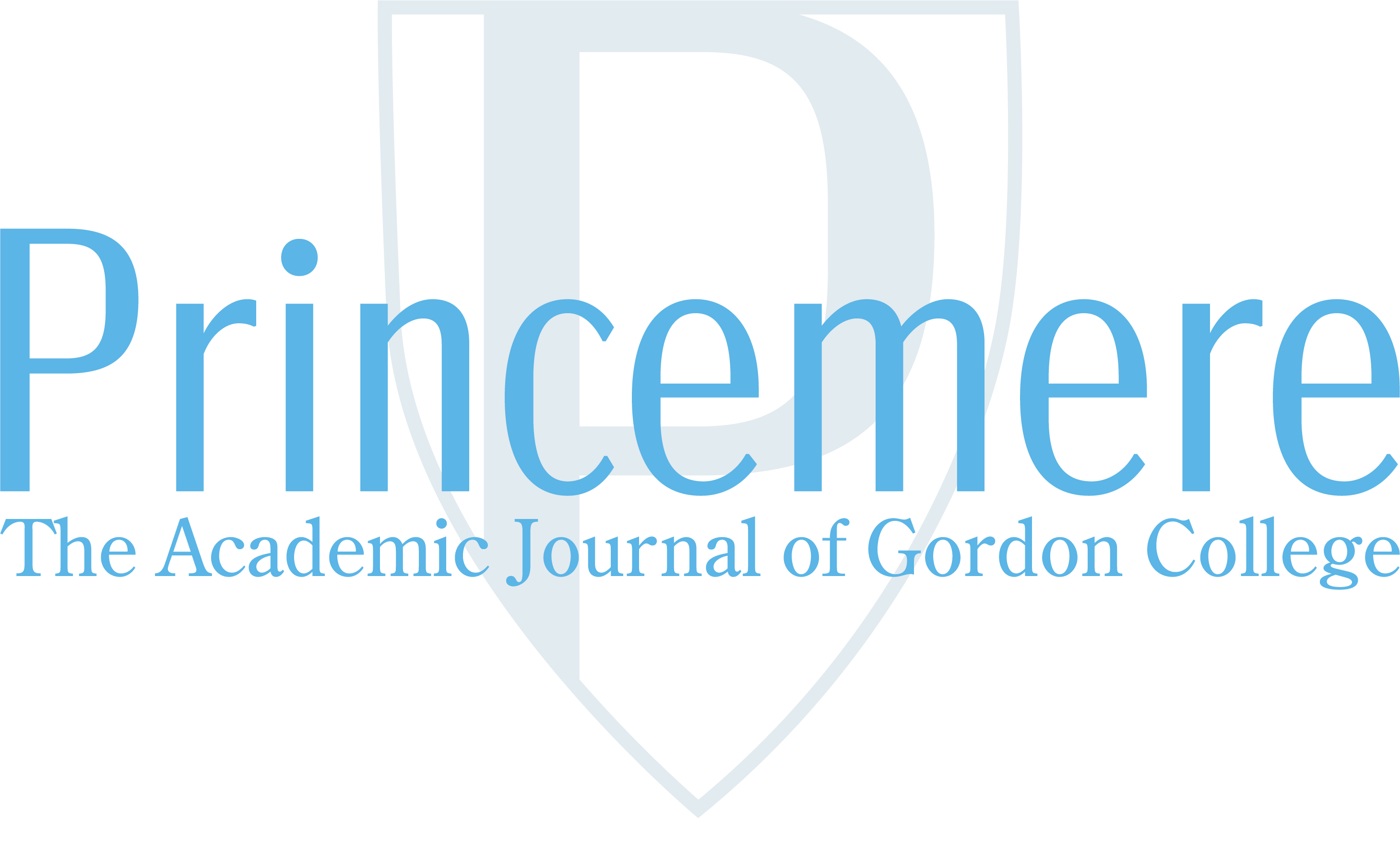The words “Disney princess” typically bring to mind a specific image. Usually this image consists of a beautiful girl aged 14-22— a royal either by birth or marriage. She is beautiful in the way society loves— with large eyes that enhance otherwise petite features. Her limbs are long and lean— her waist impossibly small. She’s thin and small, but curvy with hips that seem at odds with her very narrow shoulders. Hers is the kind of body that doesn’t exist in real life, and yet this body seems to be the shining example to young girls of what beauty should look like. In fact, until 2016 when the more realistic body type of Moana was created, each Disney princess that preceded her seemed thinner than the last. The unspoken message emerged loud and clear. It said “make yourself small— make yourself slim. You’ll get the prince in the end if you do.”
Nonetheless, there are those who see the Disney princesses as excellent role models for young girls. Alexandria Irene Lueke, a graduate student at the University of Dayton writes, “One may argue that these women are model citizens of their respective time periods who advocate for equality, while promoting healthy, functional relationships and pursuing happiness” (Princesses as Positive Role Models 1). Here Lueke chooses to focus mainly on the admirable characteristics of the princesses while neglecting the fact that children fixate on more than just the moral attributes that the princesses exhibit.
From a young age, girls are fed far more than just an example of virtue and kindness in Disney princess form— they are also fed a very specific image.
For this reason, I argue that Disney princesses cannot truly be seen as role models for young girls until their body types become realistic and attainable.
Disney’s first princesses, Snow White (1937) and Cinderella (1950) were created in a time when being thin was highly in style for young women. Small, petite women were the obvious choice in L.A film studios, as shown through popular actresses such as Ingrid Bergman and Rita Hayworth. In fact, throughout Hollywood’s Golden Age, (1930-1959) leading women on screen were shown to be quiet and demure— their faces soft and spotless, their bodies small and thin. However, such standards were quite difficult to uphold for actresses at the time, despite their persona of effortless glamour. A popular actress at the time, Judy Garland, was known to struggle with her weight. This proved to be an enormous problem for the Hollywood Studio MGM, to whom Garland was contracted. Christine-Marie Liwag Dixon writes in TheList.com “The studio treated her harshly. Concerned about her weight, the studio monitored Garland’s eating. Food would often be taken away from her, leaving her in a constant state of hunger. She would remain insecure about her body image for the rest of her life” (1). Here we see the effects of studios like MGM and their emphasis on thinness as damaging to both the actress and the culture surrounding her. Though many years have passed, the media still nonetheless perpetuates a very narrow image of what a woman should look like. The Walt Disney Company, though creating animated characters instead of using Hollywood actresses, maintains the idea that only thin women should be accepted on screen. While there are no actresses in animated films to suffer in such a way, the effects of these animated characters are detrimental on real women everywhere.
Though the media’s portrayal of women hasn’t changed much since the beginning of Hollywood’s golden era, there were a few exceptions that occurred in the next thirty years— the time it took for another Disney princess to be created. In time, a few healthier looking bodies began to find themselves onto the Hollywood screen through actors such as Marilyn Monroe and Sophia Loren. Finally, the topic of body image was slowly starting to be addressed. Here, Disney had been given the perfect opportunity to create a modern princess with realistic proportions. In the 1989 film “The Little Mermaid”, Disney could have entered into the ever-growing conversation around the causes of eating disorders and body dysmorphia in young women. They might have taken responsibility in changing the body type of their ideal “princess” stereotype. Instead, the princess they created next, Ariel (1989), was even smaller than her earlier counterparts, her trademark “barely there” waist making her distinct in fans’ imaginations. With Ariel, a new generation of princesses entered the scene— princesses whose identity was about sexuality as well as bravery. Ariel might be as good an example as ever, since the fact that she could no longer speak meant she instead had to rely on her body to draw Prince Eric to her. Michael Landis writes in Smithsonian Magazine, “While teaching young Ariel how to ‘get your man,’ Ursula applies makeup, exaggerates her hips and shoulders, and accessorizes” (1). With the popular quote, “And don’t forget the importance of body language,” viewers get the message loud and clear: only a thin, “perfect” body will attract your prince to you.
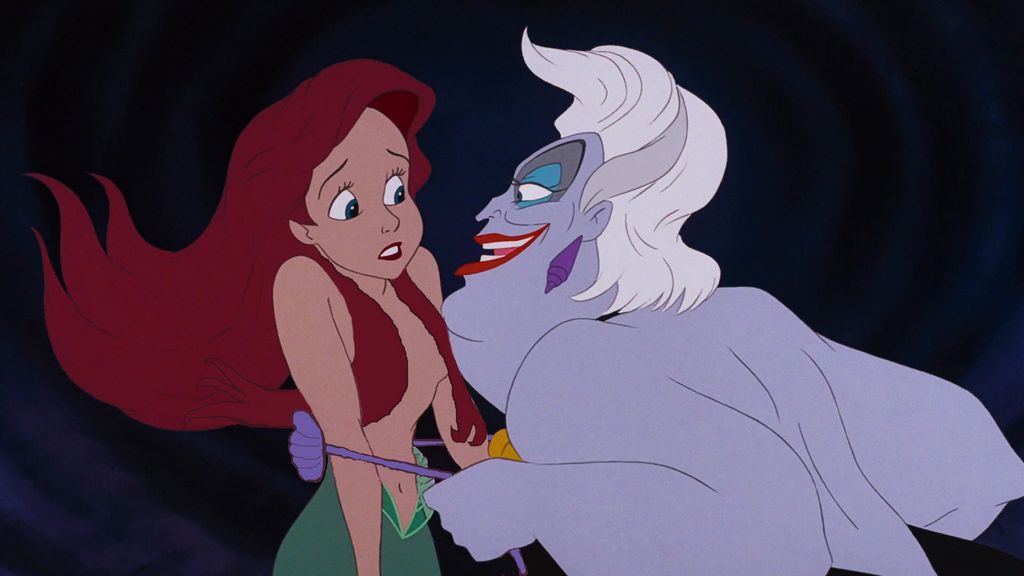
By the time that Belle (1991) and Jasmine (1992) came along, it was clear that Disney had developed their version of an ideal body type— one that seemed to rise to the challenge of shrinking each princess smaller and smaller. Rachel Michelle Johnson—- a graduate student at James Madison University— writes that “Belle’s physical attributes are emphasized throughout the film. She is the desire of Gaston simply because she is considered the most beautiful girl in the village” (Evolution of Disney Princesses 1). Though Jasmine, (1992), Pocahontas (1995), Mulan (1998), and Tiana (2009) succeeded in creating racial diversity in the Disney princess community, Disney refused to waver on representing more than one single body type. While Disney was praised for finally displaying women of different ethnicities— a welcome and necessary change which should indeed be celebrated— I argue that true diversity cannot be achieved until diversity of size and shape has been realized.
BYU Family Life professor Sarah M. Coyne explains in her essay “Pretty as a Princess” that “Disney princesses represent some of the first examples of exposure to the thin ideal. As women, we get it our whole lives, and it really does start at the Disney Princess level, at age three and four” (1). Assuming Coyne is correct— that the age of exposure to this “thin ideal” is indeed that of a toddler, the long-term effects of such negative exposure can be detrimental. While many believe that most children do not develop body image issues until they are ten or older, new research shows that most children develop body and weight insecurities at a much younger age. An article by The Huff Post writes that “People used to think body-image issues start in adolescence. Then it was elementary school. Now, evidence suggests that body-image anxiety can take hold of kids as young as age 3” ( Pearson 1). The article continues, explaining that “Nearly a quarter [of parents] said they’d seen 3 to 5-year-olds who were unhappy with their bodies, and almost half said they’d seen signs of trouble in kids ages 6 to 10. Overall, 31 percent said they’d heard a child between the ages of 3 and 10 call him or herself “fat” (1).
Even assuming that ten years old is the age where children start to become aware of their own bodies, such an age can be a challenging time for young girls. An influx of hormones results in inevitable body changes, growth spurts as well as a sudden self-awareness to both. In fact, kidshealth.org reports that “Rapid weight gain is normal in girls during puberty” (1). Hello Motherhood writes that “Puberty typically begins between ages eight and thirteen, and lasts about two to four years. During this time, the amount of fat, muscle and bone changes quickly as girls make the transition into womanhood” (1). Moreover, the US National Library of Medicine reports that puberty is a “Critical risk period for eating disorders” (Klump 1). Due to girls’ new awareness of societal standards and their changing bodies, eating disorders such as anorexia and bulimia are quite common in puberty. Quite ironically, this is the exact age that Disney princess movies seem to target, all the while promoting girls whose only sign of pubescence is in their “womanly” hips. Ironically, these princesses often lack the stomach rolls and cellulite that many pre-teen girls experience for the first time in these vulnerable years.
It can be argued through this research, therefore, that not only is the Disney princess image unattainable, it is also toxic. Disney princesses are made to be role models for girls in an impressionable time— a time when girls are not only becoming aware of their own bodies, but also of the bodies shown to them through popular media. This leads to an inevitable cycle of comparison, often leaving girls feeling like they don’t measure up. While most Disney princesses share qualities of kindness and honesty— authenticity and bravery— in the end, their uniformity in their figures is anything but reflective of true womanhood. It’s almost as though Disney hasn’t noticed that young girls come in all shapes and sizes— or if they do notice, they are more than willing to turn a blind eye to this truth. Kirsten Sayler writes in her essay, “Are Disney Princesses Hurting Your Daughter’s Self Esteem?” that ” Just like Barbie, the thin, perfectly proportioned, predominantly white characters perpetuate a potentially harmful ideal of beauty (1). Therefore, it can be argued that the Disney princess image goes far beyond the films themselves. Little girls identify with the characters they see on their screen while all at once trying to make themselves like them. Many idolize the princesses, dressing like them, acting like them and hoping to be them when they grow up.
These impressionable young girls buy the dolls and the costumes— they try to turn themselves into the perfect women that they see on screen. The only problem? Perfect isn’t possible. Perfect isn’t even real.
The writers at Imagine Today explain that “Little girls who grow up idolizing impossibly thin princesses become young women who perpetuate and buy into the idea that thin is the only acceptable form of beauty” (1). This perspective inevitably results in insecurity and discontentment. Most of all, it results in a feeling that one is not enough as they are— that a girl cannot be a “princess” unless she fits the unachievable measurements of the animated characters she so admires. The issue persisted with characters like Rapunzel (2010)— who boasted what is arguably the smallest waist of any Disney princess yet— followed by Anna and Elsa from the record-breaking princess movie Frozen. In fact, many remarked on the hyper-sexualization of Elsa as both unnecessary and damaging to young women. Perhaps more than any other Disney character, Elsa’s body is almost ridiculously unattainable. The Huff Post writes of the last scene in Elsa’s title song “Let it Go”, “Elsa is clad in a slinky, slit-to-the-thigh dress with a transparent snowflake-patterned train and a pair of silver-white high heels, her braid shaken loose and switched over one shoulder in what’s subtly, but unmistakably, a gesture of come-hither bad-girl seduction” (Slate 1). The hyper-sexualization of protagonists like Elsa lends itself to a lengthy conversation beyond what this essay can address. What it is arguably more important to address in this essay, however, is the connection of Elsa’s impossible-to-achieve-body and the fact that millions of American children have her face plastered on the walls of their bedrooms. It is this image that little girls look to as they are falling asleep— this role model whose Kardashian-esque body is portrayed as worthy of royalty. While her sister Anna lacks the curvaceous hips that her sister possesses, Anna’s waist is just as small, her limbs impossibly lean, with no extra fat to be found. The question must be asked then: why is Disney so afraid to portray a realistic looking princess? Are they worried she would no longer be beautiful if she were a size six instead of a size double zero?
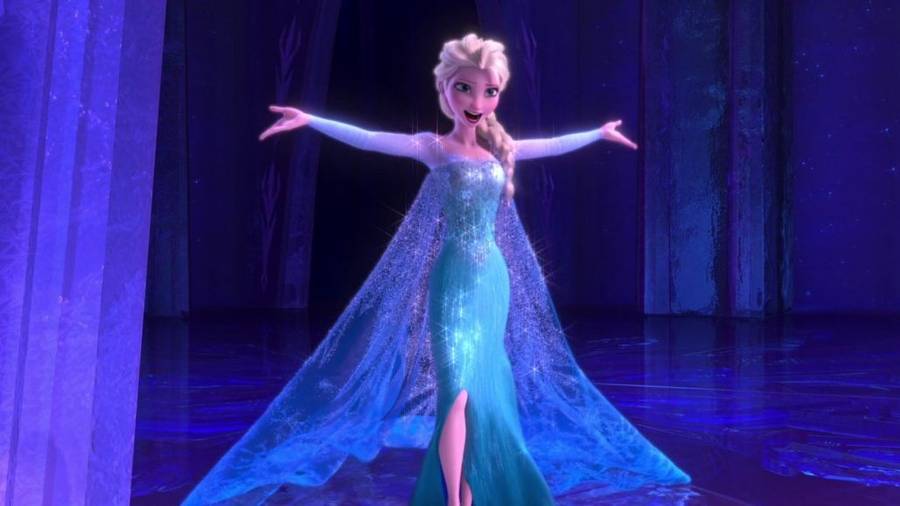
This proposed answer leaves a bad taste in one’s mouth. We want to hope against it— want to wish that it’s not true. And yet Disney makes it very clear in their portrayal of the same body type time and time again. In fact, any woman who isn’t thin is typically a villain in the Disney imagination— characters such as Ursula and the Mad Hatter who work against the “perfect’ Disney princess. While the message isn’t exactly blatantly stated, the images often speak for themselves. Coyne writes that “According to research on the thin-ideal internalization, a belief that ‘thin is good’ results when individuals internalize perceptions that are voiced by significant or respected individuals, including parents, peers, and the media (Thompson & Stice,2001).” Therefore, repeated exposure to thin ideal media quietly repeats the message over and over until it’s no longer a whisper. These words, damaging and cold, tell young girls, that “you have to look like them to be loved.”
Disney has received criticism for some time about this issue, with many parents and media publications blaming Disney for promoting an unhealthy image. This was especially apparent after the 2015 live-action remake of the movie Cinderella. The actress who portrayed Cinderella, Lily James, came under scrutiny after promotional photos for the film were released, as James’ waist seemed impossibly thin to many fans. Given that today the average American woman’s waist is around 38 inches, James’ 17-inch waist is less than half that size. Buzzfeed News, as well as several other media outlets, even accused Disney of digitally altering the image, though both James and the Walt Disney Co. denied this. However, an in-house illustrator at Buzzfeed, Loryn Bantz, called out Disney, saying, “As a professional artist and animator who has studied the female figure and altered Disney Princesses on a regular basis — it is in my expert opinion that Lily James’ waistline was definitely altered with CGI” (1).
Whether or not Disney actually slimmed down James’ already thin form, (that which was already corseted in so tightly that the only food she could eat on set was soup), there is an even more important question to be asked. Why did Disney, whether through using CGI or not, feel the need to create such an unrealistic hourglass figure for an actress who was already so thin? Disney, through corseting James in so tightly, seemed to be entirely aware of what they were doing. They knew that the image they were perpetuating was, for most women, entirely impossible to achieve. For this reason, the film can hardly be called feminist, as some have boldly called it. In fact, it seems that James’ tiny waist is an image created by men with little to no regard for female viewers.
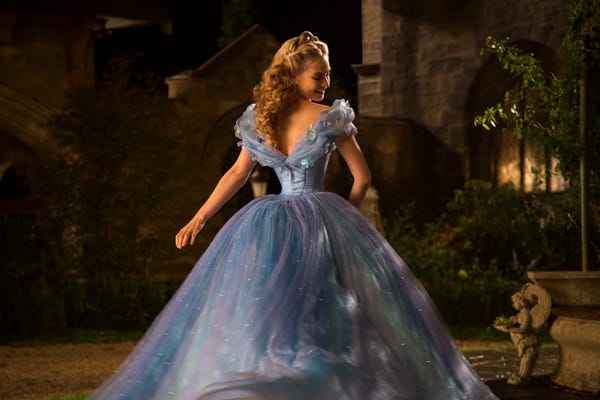
Whether or not the backlash from Cinderella broke through the walls of the Disney headquarters, a change was made in 2016 through the Disney princess Moana. Immediately upon seeing the image of the animated 16-year-old, viewers noticed a difference in her body type. Though still thin, Moana’s body looks much more like the young girls who have made her their role model. Her limbs are still long and lean, her waist still small, but the difference is clear. Moana looks healthy and realistic, her body compact and fit. When speaking to the Sunday Times, Osnat Shurer, the film’s producer, said it was “absolutely” a conscious decision to give Moana a realistic figure” (1). Caila Leigh Cordwell, a graduate student at Southeastern University Lakeland, writes in her honors thesis, “Moana sets a new standard for how a princess can be shaped. She is much stockier than say, Cinderella or Jasmine, in keeping with her Pacific Islander heritage. Moana’s body is much more accurately shaped to how a realistic young woman would look, giving the young female audience a breath of fresh air” (Shattered Slipper Project 37). Through the character of Moana, young girls can, for the first time, see themselves on the big screen. They see Moana as a princess who not only looks like them, but whose strong, mesomorphic body helps her accomplish her mission. Moana then, unlike her earlier Disney princess counterparts, encourages impressionable young girls to look at their body and see it as something powerful and worthy. Moana’s body isn’t meant to allure men. Instead, her muscular figure helps support her on her mission to save her people.
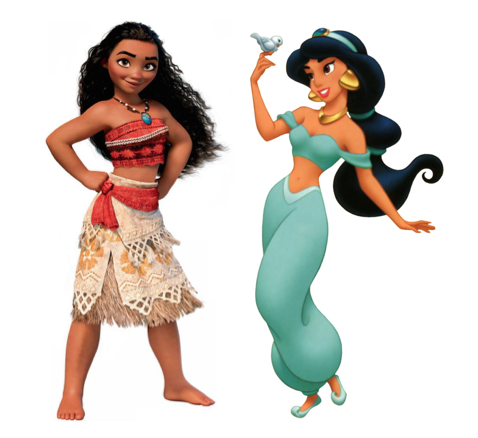
Now, Disney finds themselves at a crossroads. With a new Disney princess soon inevitably on the horizon, the company has a choice to make. Will they continue to promote a harmful image of the Disney princess whose unattainable physique only perpetuates girls’ insecurities? Or will the Disney company create more princesses who look like Moana— doing their part to change societal standards of the thin ideal? With eating disorders being among the deadliest of metal illnesses— second only to opioid overdoses— this issue must be taken seriously. Disney has a responsibility to the young girls who they market to, and to the parents who financially support the company.
It’s time to stop tearing down young girls’ self-confidence with an image of how they should look and instead start embracing each and every body as something unique and beautiful.
Bob Iger, the CEO of the Walt Disney Company, claims in his Masterclass that one of the more important goals of the Walt Disney Company is to “show young women who are empowered” (1). If this is really true— if Disney truly cares about positively impacting young girls, I argue that doing so begins with creating images that make them feel worthy as they are, instead of making young girls feel as though they need to change to fit a specific mold. Such a change starts with companies such as the Walt Disney Company whose international influence touches millions of young girls— for better or for worse.

Laura Caron
Laura is currently a Junior at Gordon. Passionate about the written word, she enjoys expressing herself through writing both professionally and creatively. In her free time, she enjoys reading, hanging out with friends and being active. As editor-and-chief of the Princemere, she is focused on creating a space that encourages everyone to find the joy within writing and the art of storytelling.
